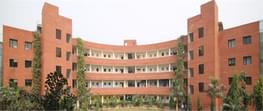Prof. Dr. Anil Dewan is an experienced professional in the fields of architecture and academia. He completed his Bachelor of Architecture (BArch) from the School of Planning and Architecture (SPA) in New Delhi between 1976 and 1982. Later, he pursued a Master's degree in Building Engineering and Management from the same institution from 2001 to 2003. Dr. Dewan also holds a Ph.D. in hospital standards, which he obtained from SPA New Delhi in 2012.
With an impressive tenure of 34 years, Dr. Anil Dewan has served as a professor of architecture and head of the School of Planning and Architecture in India. He has contributed significantly to the field and has been involved in various projects. Notably, he worked on the ARPIT SWAYAM MOOC for AICTE (All India Council for Technical Education) on Emerging Areas in Hospital Design, Planning, Construction, and Facilities Management from July 2019 to July 2020. Dr. Dewan's extensive experience and expertise make him a respected figure in the realms of architecture and academia.

What inspired you and drew you towards architecture?
When I was a small child, I used to draw a lot. In my books, in the notebooks, on the walls,then my peers, my parents, and everybody around me said that a person who used to draw a lot should be sent to study architecture. So at that time, the perception was that anyone who draws a lot should become an architect. Artists at that time, no one didn't understand them. So yeah, that is how I became an architect. So my family, my peers, and everybody else wanted me to become an architect, so I became an architect.
What are the primary responsibilities as an HOD of Architecture in SPA New Delhi?
We have 12 departments in the SPA. There are 10 postgraduate courses. Then we have masters of design, and we have masters in architecture and urban design. So the department of architecture is a large department of undergraduates. Around 750 students are there. We do research consulting, teach, and do community outreach. We advise the government on so many things. I have to make the syllabus, make the timetable, appoint the teachers, and make them understand their roles and responsibilities, giving a very good environment of teaching and learning to all the researchers, consultants, teachers, students, and administrative staff we have here. We have a lot of extracurricular activities. So it's a lot of responsibility; it's planning, thinking, implementing, and doing day-to-day activities.
How does the whole programme of architecture in SPA New Delhi ensure that the students are ready for the future and the real world?
Ours is a very wholesome course. Architecture is a very wholesome course where we teach history, culture, sciences, research arts, aesthetics, and appreciation of whatever good taste we develop in a student. It's not easy to do; it takes a lot of hard work, a lot of energy, and a lot of application. So, as it is an applied art, you actually need to have it in your blood. Either you have it or you don't. In our times, my HODs used to say that an architect is born; you cannot make someone an architect. But now we see that with that rigor, with the drill, with the hard work, you may make a person into an architect, but you have to have the aptitude to become an architect.
How did you tend to build an industry connection for this programme of Architecture?
We have a very strong industry connection with this program. For example, I am telling you that in the upcoming semester, I am introducing a choice-based studio in hospital design. My department is almost 80 years old. We have alumni all over the place all over the world, so we ask them when they come for juries and examiners here what they find lacking in the work of the students. So we try to incorporate that feedback and develop it into a course in the studio, and we now pick up a concept and then develop it further into design and improve it. So we do much more than just conceptual design here.
Check School of Planning and Architecture Courses & Fees
What are the main types of projects that the students are working on through this course?
So over five years, we go from the most simple to the most complex of the projects. In their fifth year, they write a thesis, which is the choice of the student. Whatever the topic might be, they can choose it and work on it individually according to their competence, capability, and aptitude, and the mentors guide them. We tend to ask them to do a real project that is workable and doable by one student at a time, and in the time frame, they have to complete that in 6 months. After that, before the last semester, they have a large project on urban design, and they work in groups. Before that, in the fourth year, we had an industrial project where you go to the office and work there; before that, there was a choice-based studio project. The third year is active and passive systems of sustainable design, resilience, and energy-based projects. Before that, in the second year, we have projects on house design and vernacular architecture. The first year is about knowing the basics and graphics of fundamental design and how to develop a good aesthetic sense.
What sets SPA New Delhi’s course of architecture different from other architecture courses?
We have three streams. We have a technology stream, a history, culture, and criticism stream, and a research stream in that we have many subjects and a lot of subjects, and we tend to teach what we call the lifelong working methodology. Actually, we are criticized sometimes for teaching too many subjects too many times. Like we teach more civil engineering in 5 years than a civil engineering course in 4 years. So we teach mathematics, statistics, history, design, aesthetics, etc. We also have so many extracurricular activities for which, according to the new education policy, we are going to give credits to our students for doing what they like doing. Follow your passion and get credit for doing that.
What are the challenges you have faced through inculcating these projects and curriculum in your department?
There are a lot of challenges. The biggest challenge is bridging the gap between the backgrounds of the students. We get students from the remotest parts of the country because they come through government exams like JEE, so their cultural backgrounds and Language barriers have to be dealt with. This diversity adds so many things to the class, but then they have to know the basics of sciences and mathematics, and so we have to bring them to a level, and it takes a lot of energy, a lot of bridge-building, and a lot of mentoring. It takes almost one year to make them unlearn what they have learned in their school and learn what we want them to learn here.
What one piece of advice would you give to the aspiring students?
I would like to say that most of the western countries have already been there, and you have to take India to that level. There is a lot of work, a lot of exposure, and a lot of opportunities to come, and we train you not only for India but for the rest of the world. So be prepared to work hard, party hard, and get placed very properly, and the sky's the limit for you. I wish you all the best. Thank you.

![School of Planning and Architecture - [SPA]](https://image-static.collegedunia.com/public/college_data/images/logos/1721987725Untitledlll.png?h=71.7&w=71.7&mode=stretch)









![Periyar School of Architecture -[PSA]](https://image-static.collegedunia.com/public/college_data/images/appImage/1731588837Screenshot20241114182333.png?h=111.44&w=263&mode=stretch)
























.png?h=72&w=72&mode=stretch)

![Apeejay Institute of Technology, School of Architecture & Planning -[AIT SAP]](https://image-static.collegedunia.com/public/college_data/images/logos/1475760964Logo.png?h=72&w=72&mode=stretch)

![Chandigarh College of Architecture - [CCA]](https://image-static.collegedunia.com/public/college_data/images/logos/1418216418llogo.jpg?h=72&w=72&mode=stretch)
![Sushant School of Art and Architecture - [SSAA]](https://image-static.collegedunia.com/public/college_data/images/logos/15987810101598521446Logo.png?h=72&w=72&mode=stretch)
![School of Planning and Architecture, University of Mysore - [SPA]](https://image-static.collegedunia.com/public/college_data/images/logos/14944853551413544174UniversityofMysorelogo.jpg?h=72&w=72&mode=stretch)

![School of Architecture and Planning, Anna University - [SAP]](https://image-static.collegedunia.com/public/college_data/images/logos/1467868044logo1.png?h=72&w=72&mode=stretch)
![School of Planning and Architecture - [SPAV]](https://image-static.collegedunia.com/public/college_data/images/logos/1737305831SPAV.png?h=72&w=72&mode=stretch)
![Gateway College of Architecture and Design - [GCAD]](https://image-static.collegedunia.com/public/college_data/images/logos/16246172621618811746Gatewaylogo.png?h=72&w=72&mode=stretch)

![School of Planning and Architecture - [SPA]](https://image-static.collegedunia.com/public/college_data/images/logos/14910392631426324093jp.jpg?h=72&w=72&mode=stretch)


![Accurate Institute of Architecture and Planning - [AIAP]](https://image-static.collegedunia.com/public/college_data/images/logos/16433733311603443768Logo.png?h=72&w=72&mode=stretch)
![Sir JJ College of Architecture - [SJJCA]](https://image-static.collegedunia.com/public/college_data/images/logos/143019786211223scsxc.jpg?h=72&w=72&mode=stretch)

Comments